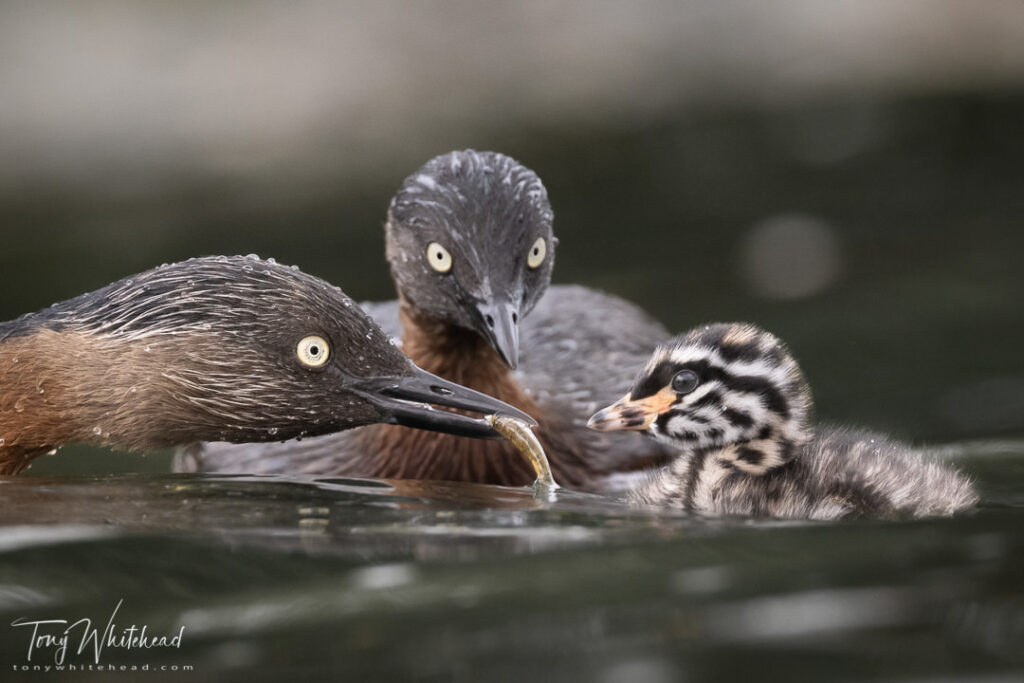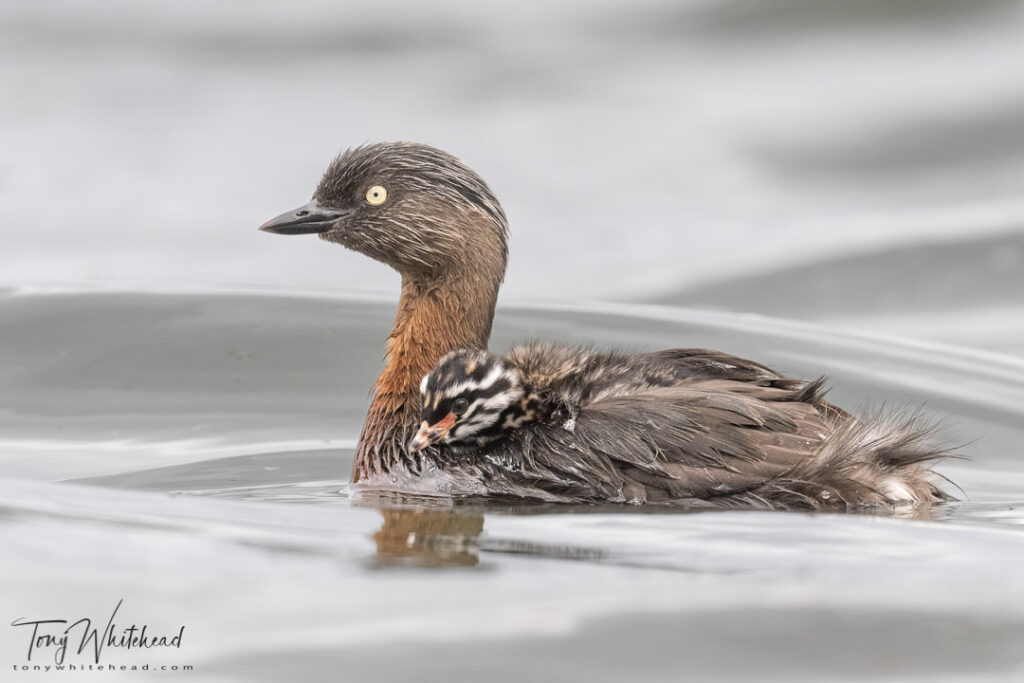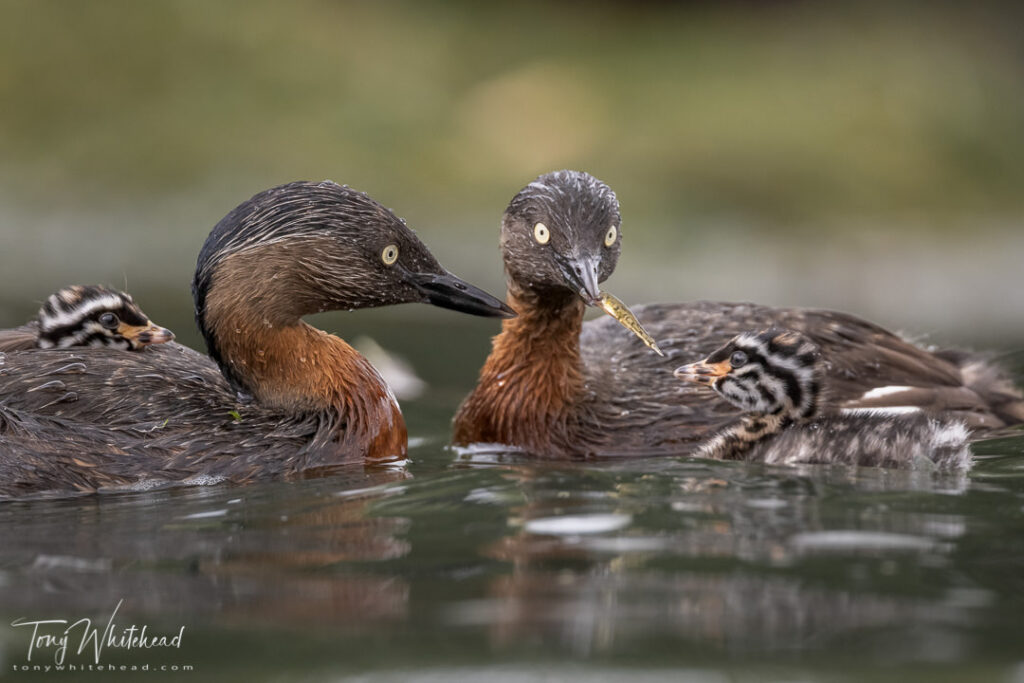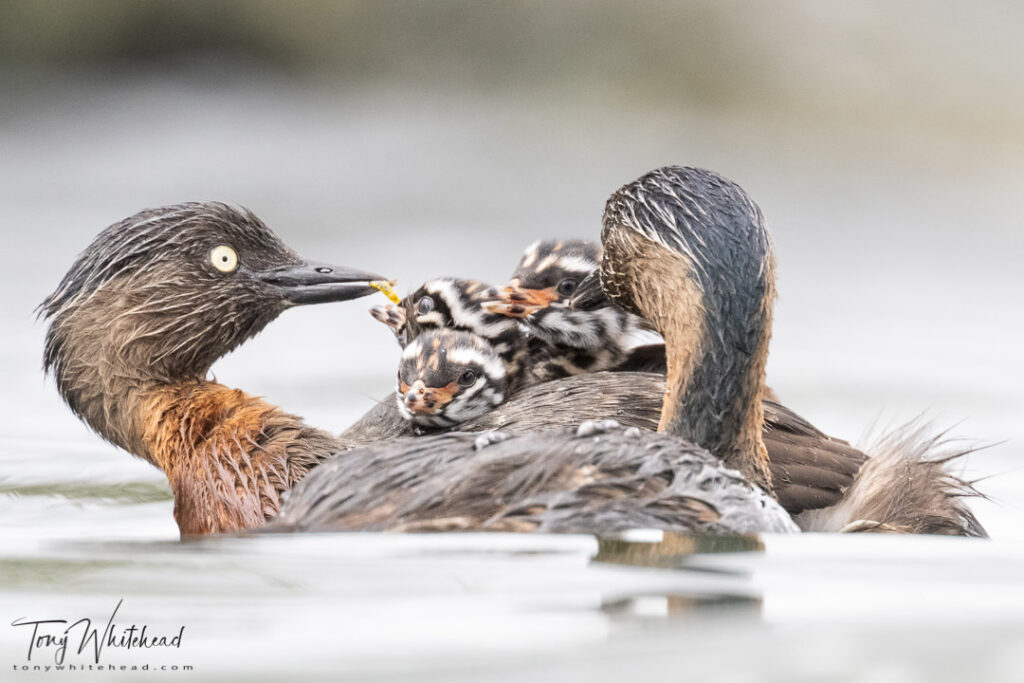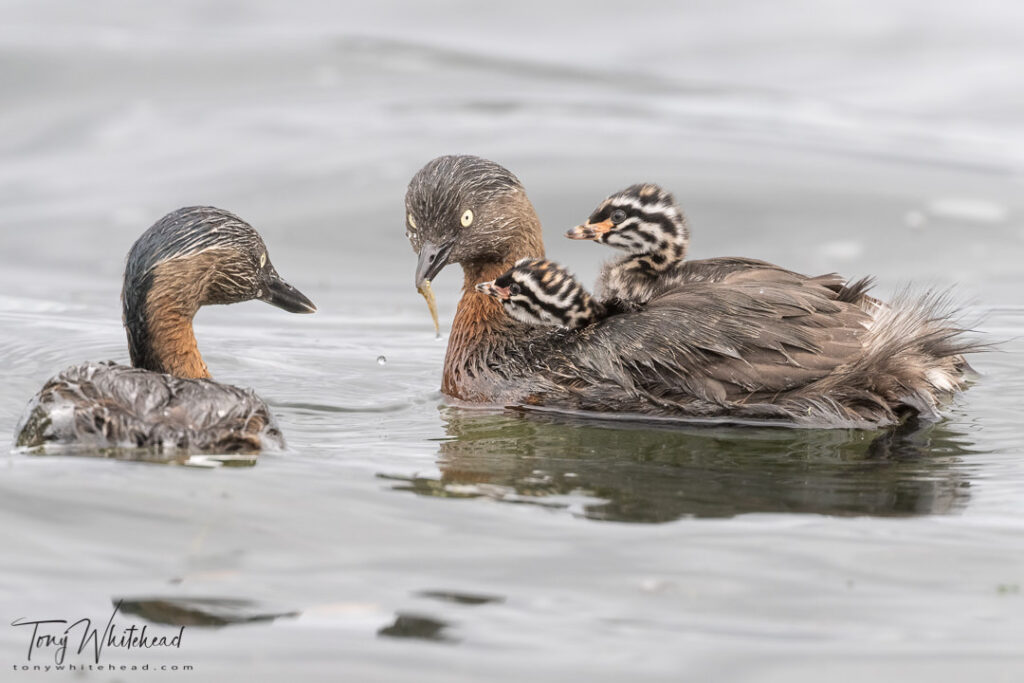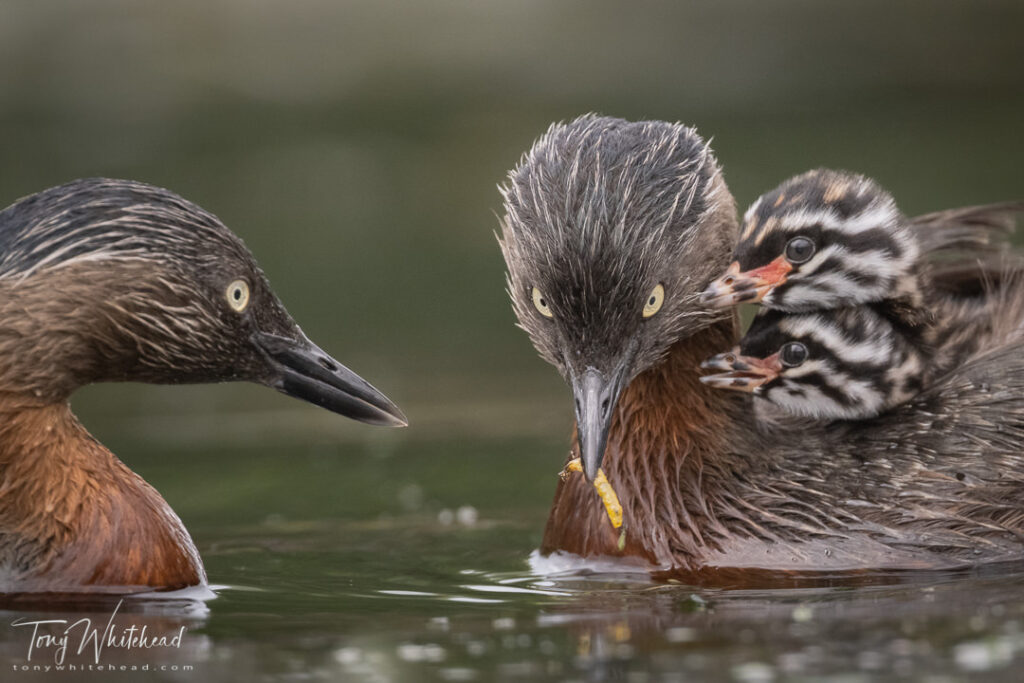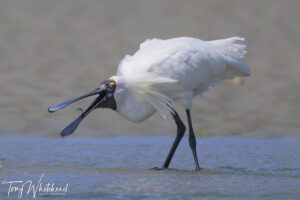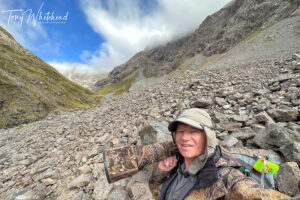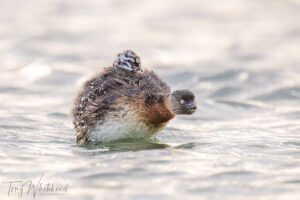Using eye autofocus has been a new experience for me since starting to work with the Nikon Z9. Human eye AF is part of my Nikon Z7 but as this camera is used mainly for macro work it is not something I have played with much. The Z9 now includes animal AF which selects bird eyes well.
In a previous post I have written and illustrated how well this works for birds in flight and feeding on mudflats but the area that I have found it most useful is for waterbirds bobbing on waves. This has been highlighted working with a family of New Zealand Dabchicks which have been busily feeding their trio of fresh chicks. They are small and active birds and recent windy conditions have meant quite rough lake conditions. This results in the subjects moving significantly in 3 dimensions and it can be hard to keep them in frame when using long telephotos at close range. To keep a focus box around them is even more challenging but once the eye AF locks the camera tracks focus around the frame very reliably. I have been using the Wide Area (large) mode and it seems to keep the eye focus locked even if the subject moves well outside the focus box.
Previously, my motivation when upgrading camera bodies was to try and remove limitations that the camera was imposing on me. It was frustrating to feel that I was doing all I could and that it was limitations of that camera that was holding me back. With the Nikon D850 and D500 I never felt that the limitations were the camera focus ability. If I did my bit the camera would deliver. I never imagined that a camera could do more than focus accurately and rapidly on what I placed the focus point on. This probably just shows a lack of imagination on my part!
In the conditions I have been working in that meant that if I could keep the AF sensors over the bobbing bird I could get the images. This is easier said than done, especially when a low camera angle has the birds regularly disappearing behind waves. Success was achievable but there were a lot of misses which I took responsibility for. What the Z9 has done is to show that it can now do more of the work for me. If I can frame the subject it will look after the focus for me so that I don’t have to concentrate on two things at once (framing and keeping the subject in the focus zone). My success rate is far higher and I can confidently say that I am getting images that I would never have got in the past and if I had would have almost considered a lucky fluke. The Z9 makes me look like a better photographer!
In a similar vein, I have been doing some human candid portrait work and eye AF has been very helpful with this too. Where previously I would have been concentrating on focus and composition, I can now prioritise composition and have the green square over the eye reassure me that focus is under control by the camera which just tracks it around the frame. I suspect the Z7 would do a similar job but the complete silence of the Z9 makes it the ideal body for this work.
NZ Dabchick photos with Nikon Z9 and Nikkor 500mm f5.6PF lens with TC17 1.7x teleconverter with FTZ adaptor.
